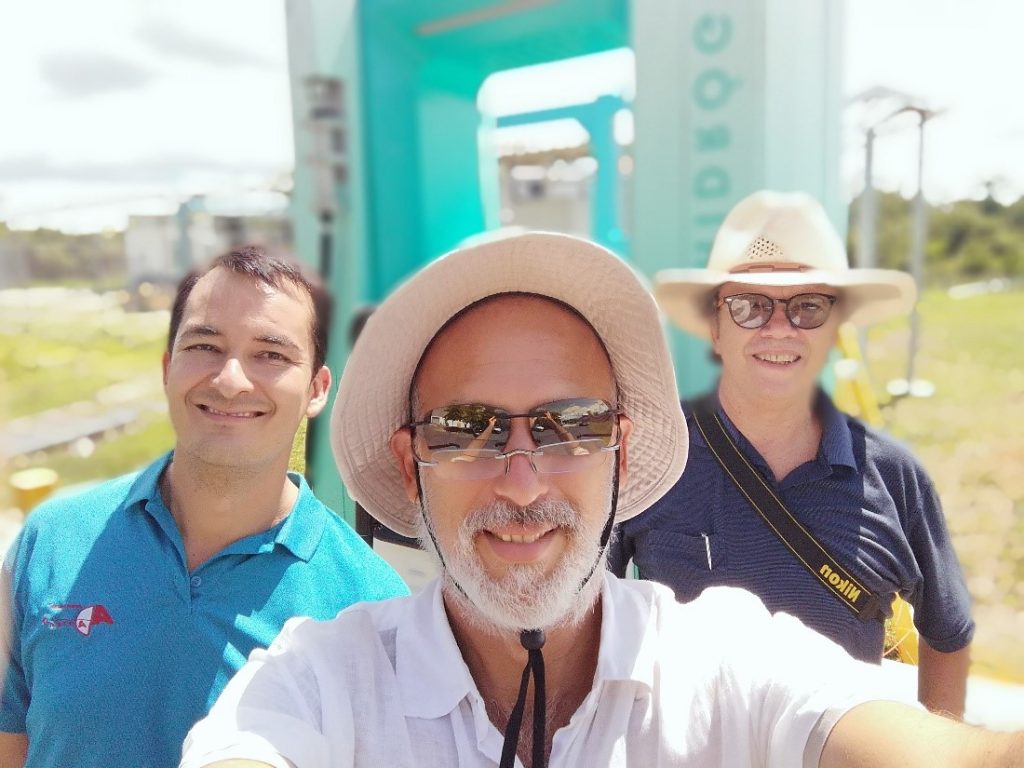Presentation and discussion of HINICO’s study on the potential of a national green hydrogen strategy in Costa Rica
Published on June 30, 2021
On the third day of the training on Green Hydrogen & PtX in Costa Rica on the 20th May 2021, the participants got the chance to take a deep dive into the current situation regarding green hydrogen and PtX in their country. In the training’s transfer workshop, facilitated by the International Power-to-X Hub Berlin in cooperation with the GIZ project MiTransporte in Costa Rica, HINICO and a Belgian consulting firm, presented its recently completed ‘Study on the possibilities to produce, use and export green hydrogen in Costa Rica’.
Together with the GIZ Innovation and Business Development Hub (short: InnoHub), a pilot initiative that seeks to expand the impact of GIZ projects in the region and to put innovation into action with concrete, tangible and useful applications, GIZ in Costa Rica hired the services of the consulting firm HINICIO SA to work on a research project of green hydrogen applications in Costa Rica.
One of the goals of the study was to provide recommendations for a future Costa Rica National Hydrogen Strategy, as well as a road map for the development of such a strategy. This linked in perfectly with the content of the lectures of the Green Hydrogen & PtX Training in which policy recommendations and roadmaps for a national green hydrogen and PtX strategy and market ramp-up mechanisms are presented and discussed.
Moreover, HINICO’s study laid out Costa Rica’s renewable energy potential being ten times as high as its forecasted energy demand by 2030. In the scenario for 2040, the renewable energy potential could reach more than 230 TWh/year, largely above the government’s demand forecast for Costa Rica, which is about 18 TWh/year (in the high-demand scenario). This excess electricity could be used to produce green hydrogen and PtX, respectively. The most important renewable energy resources in Costa Rica are hydro power, onshore wind, geothermal and solar PV. The combined solar PV and wind potential – considered in HINICO’s report as suitable for green H2 production – requires less than 10 % of the Costa Rican territory – consequently fulfilling important sustainability criteria concerning land usage. Furthermore, as observable in the graph below,1 the Costa Rican example shows the projected cost development of different RE sources for the green hydrogen production: what’s still costly today will become cheaper and competitive in the years to come.
Following this logic, a decrease in the price of green hydrogen compared to fossil fuels or other types of hydrogen is to be expected, as observable in the following graph.2
However, the country’s volumes of hydrogen produced in 2030 will be minor compared to other potential exporting countries. HINICO found that the cost of Costa Rican hydrogen at the port of destination in the main foreseeable future importing markets (EU, Korea, Japan) will be above those of potential competitors.
For Costa Rica, this results in the need to focus its efforts on the development of a national hydrogen strategy that mainly addresses domestic applications of green H2, which in turn contribute to the decarbonisation of the national economy in key sectors like transport, heavy industry and agriculture.
In transport, diesel has the biggest share of fossil fuel consumption, mostly consumed by heavy duty mobility segments for both passenger and freight transport (51.2% of the diesel consumption in the transport sector).3 Hydrogen technologies will become a competitive option in these segments in the medium-term, so the potential for diesel replacement by green hydrogen in transportation is high.
Decarbonising the transport sector could avoid 2.68 million tons of CO2 being emitted in Costa Rica by 2050. In addition, promising niche applications can be identified in the production of e-fuels to supply international flights and maritime ships connecting with Costa Rica and thus contributing to international decarbonisation efforts, as well as in the use of hydrogen as energy storage for isolated microgrids.

(Copyright: Claus Kruse / GIZ)
HINICO established an action plan for the development of hydrogen in Costa Rica – starting with assigning responsibilities for the market preparation and actions to be taken in the early market development towards a mature market in 2030.4
The public sector plays an important role in developing the hydrogen market, and not only at its infancy. Especially the Costa Rican Environment and Energy Ministry MINAE plays a prominent role in the development of the hydrogen market in Costa Rica. Similarly, the contribution of other ministries and government agencies is crucial to build the national hydrogen ecosystem (such as other sector ministries) as well as energy providers, academia and the private sector.
In the Green Hydrogen & PtX Training of the International PtX Hub Berlin, actors of all these organisations came together to learn more about green hydrogen and PtX and extend their network. As a result of the three-day training, several participants committed to form a working group to bring forward the development of a national green hydrogen strategy with joint forces. As of now, it is of great importance to develop the regulatory framework for hydrogen in the short term as well as to assign roles and responsibilities in the subsequent market development stages identified by HINICO.

(Copyright: Claus Kruse / GIZ)
Contributor to this article is Elisabeth Kriegsmann.
[1] HINICO SA and GIZ (2021, April 22). Study on the possibilities to produce, use and export green hydrogen in Costa Rica. p.10.
[2] HINICO SA and GIZ (2021, April 22). Study on the possibilities to produce, use and export green hydrogen in Costa Rica. p.11.
[3] SEPSE/MINAE, 2020 – Energy Balance Costa Rica 2019.
[4] The assigned stakeholders are detailed in: HINICO SA and GIZ (2021, April 22). Study on the possibilities to produce, use and export green hydrogen in Costa Rica. p.32 ff.


